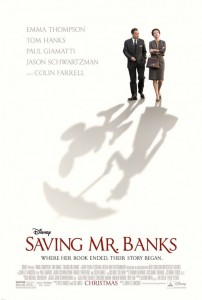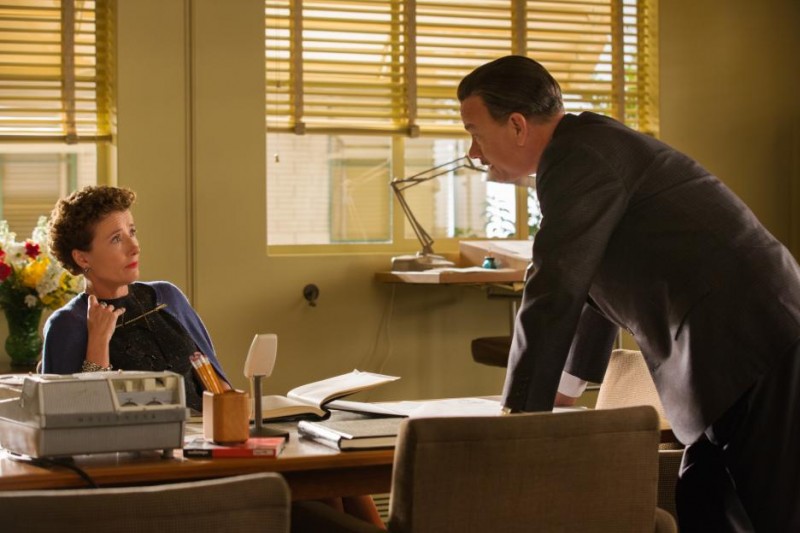Iconic studio head Walt Disney (Tom Hanks) needs all the magic he can muster to win the screen rights to Mary Poppins in Saving Mr. Banks.
The classic tale of the magical title character comes from a series of best-selling stories by English author P.L. Travers (Emma Thompson). Mrs. Travers (as she insisted on being called) protected her creation with a level of care bordering on the extreme. When Disney came courting for the rights, Mrs. Travers wasn’t exactly thrilled. Disney’s movie company represented everything she despised for her characters. The thought of them being turned into a hodgepodge of singing, dancing cartoons was simply unbearable.
Mr. Disney, used to getting his way, invites Mrs. Travers to California where he believes that he and the team behind the adaptation can enchant the cantankerous author. This turns into a real-life case of an immutable force meeting an immovable object. Mrs. Travers finds fault with every Disney overture and idea while Disney and his staff find Mrs. Travers to be intolerable and insufferable.
The surprise of the film is the deeper, far more personal backstory behind why Mrs. Travers was so impossible to deal with. This understanding is presented in flashbacks of her childhood and the poignantly intimate details of her life that provided the foundation for her stories.
The film itself boasts some wonderful performances. Thompson portrays Travers as deliciously arrogant with a dash of petulance. Hanks, as Disney, has one of the more challenging tasks. Evoking the beloved founder of the studio had to be stressful, but there’s almost no sign of it here. Walt’s addiction to cigarettes isn’t shown, although Hanks does drop in a hacking cough time and again. We also get some nice performances from Colin Farrell as Travers’s troubled father and Paul Giamatti as Ralph, a Disney driver assigned to her.
The latter role is one of the few elements of the film that seems fairly contrived. He alone seems to be able to connect with the unrelenting author, serving as a critical element in her ultimate change of heart. It’s just a bit too convenient.
This is a tale that seamlessly moves between two diverse eras, perfectly melding each end of the story as it goes. The evolution of the film is also quite striking. It starts off with a lighthearted, engaging style that moves into darker, more serious introspection before finally exiting with an unexpected emotional ending. In other words, it’s classic Disney.




